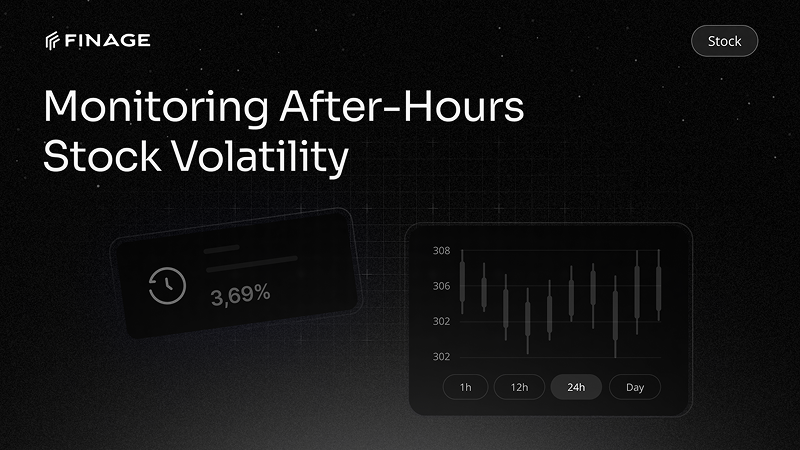API Documentation Best Practices: How to Make Your API Easy to Use
5 min read • February 22, 2025

Introduction
APIs have become an essential component of modern digital infrastructure, enabling seamless communication between applications and systems. Whether for fintech applications, trading platforms, or data analytics tools, having well-structured and user-friendly API documentation is critical to ensuring smooth integration and usability. Developers rely on API documentation to understand how to make requests, retrieve data, and troubleshoot issues effectively.
A well-documented API reduces the learning curve for developers, enhances productivity, and improves overall adoption. Clear instructions, real-world examples, and well-organized references make it easier for users to integrate APIs into their systems without frustration. Without proper documentation, even the most powerful API can become underutilized due to complexity and lack of clarity.
At Finage, providing high-quality financial data APIs means not only delivering accurate and real-time market data but also ensuring that developers can easily integrate and use these services. This blog explores best practices for creating clear, efficient, and user-friendly API documentation that enhances the developer experience and streamlines implementation.
Contents
- Why API Documentation Matters for Developers
- Key Elements of Well-Written API Documentation
- Structuring API Documentation for Clarity and Usability
- Best Practices for Writing Developer-Friendly Documentation
- How Finage Ensures an Intuitive API Experience
- Final Thoughts
Why API Documentation Matters for Developers
Developers often work under tight deadlines, needing to integrate APIs quickly and efficiently. Without clear documentation, onboarding becomes a tedious and frustrating process that slows down implementation and increases the risk of errors. Poor documentation can lead to misinterpretations of API endpoints, incorrect data retrieval, and unnecessary support requests, ultimately reducing API adoption rates.
Good API documentation acts as a roadmap for developers, guiding them through authentication, request formatting, and response handling. When APIs are well-documented, developers can troubleshoot errors independently, experiment with endpoints, and optimize their code without unnecessary guesswork. This results in a smoother development process, faster time-to-market, and an overall better experience for both API providers and users.
Key Elements of Well-Written API Documentation
Effective API documentation should provide all the essential details developers need to successfully interact with an API. This includes authentication methods, request and response structures, supported endpoints, and example use cases. A well-structured API guide ensures that developers can easily find the information they need without having to dig through multiple pages or contact support.
Clarity is crucial. Each API endpoint should be clearly described with information on what it does, required parameters, expected responses, and potential error codes. Providing JSON or XML response examples helps developers understand how data will be returned and how they can process it within their applications.
Interactive documentation also improves usability. API providers that offer tools like request builders, sandbox environments, and live testing options enable developers to experiment with endpoints in real-time. This hands-on approach accelerates learning and ensures developers can confidently integrate the API without trial-and-error coding.
Structuring API Documentation for Clarity and Usability
An intuitive structure is key to making API documentation accessible. Organizing documentation into clearly defined sections prevents confusion and ensures developers can quickly locate relevant information. A well-structured API guide typically includes:
- Introduction and Overview: A high-level explanation of what the API does and how it benefits users.
- Authentication and Security: Details on API key generation, token-based authentication, and security best practices.
- Endpoints and Methods: A breakdown of available API endpoints, including HTTP methods (GET, POST, PUT, DELETE) and parameter descriptions.
- Request and Response Examples: Code snippets demonstrating how to make API requests and interpret responses.
- Error Handling and Status Codes: A reference section outlining possible errors and how to resolve them.
- Rate Limits and Usage Guidelines: Information on API request limits and best practices for efficient API usage.
- FAQ and Troubleshooting: A section addressing common issues and solutions to prevent frequent support queries.
When documentation is structured logically, developers can navigate it easily, reducing frustration and increasing API adoption.
Best Practices for Writing Developer-Friendly Documentation
To create documentation that truly supports developers, it should be written in a concise, engaging, and easy-to-understand manner. Avoiding overly technical jargon while maintaining accuracy ensures that developers of all skill levels can utilize the API effectively.
Providing sample code snippets in multiple programming languages helps developers quickly implement API calls in their preferred environment. Whether using Python, JavaScript, or another language, clear examples demonstrate how to integrate the API correctly.
Consistency in formatting is another crucial aspect. Using a standardized layout, fonts, and color schemes improves readability and professionalism. A well-organized API reference that follows a uniform pattern across all endpoints enhances usability and minimizes confusion.
Encouraging feedback from developers allows API providers to refine their documentation continuously. Adding a feedback form or community forum where developers can share their experiences and report issues helps improve the quality of API guides over time.
How Finage Ensures an Intuitive API Experience
Finage understands the importance of well-documented APIs in providing seamless access to financial data. With a developer-first approach, Finage ensures that all API documentation is structured, clear, and easy to implement. Every endpoint is detailed with real-world examples, interactive testing tools, and comprehensive authentication guides, allowing developers to integrate real-time and historical market data effortlessly.
By maintaining transparency in response structures, error messages, and rate limits, Finage removes guesswork from API integration. The API documentation is designed to accommodate both beginners and experienced developers, ensuring that users can leverage Finage’s financial data solutions with confidence.
Finage also provides developer support and updates documentation regularly to keep up with evolving financial markets and technology advancements. This commitment to clarity and usability ensures that businesses relying on Finage’s APIs can optimize their trading algorithms, portfolio management tools, and financial analytics platforms with ease.
Final Thoughts
API documentation is not just a reference manual—it is an essential tool for onboarding, troubleshooting, and maximizing the usability of an API. Well-structured and developer-friendly documentation streamlines integration, reduces errors, and enhances overall user experience.
Finage sets the standard for high-quality API documentation by providing clear, detailed, and interactive resources that empower developers to integrate financial data with ease. As financial markets become more data-driven, ensuring that APIs are accessible and well-documented is key to enabling innovation and efficiency in fintech applications.
By following best practices for API documentation, developers can build robust, efficient, and scalable applications that leverage financial data effectively. With Finage’s commitment to providing intuitive and well-documented APIs, businesses and developers can focus on innovation and market growth without unnecessary integration challenges.
You can get your Real-Time and Historical Market Data with a free API key.
Build with us today!
Claim Your Free API Key Today
Access stock, forex and crypto market data with a free API key—no credit card required.

Stay Informed, Stay Ahead
Finage Blog: Data-Driven Insights & Ideas
Discover company news, announcements, updates, guides and more


